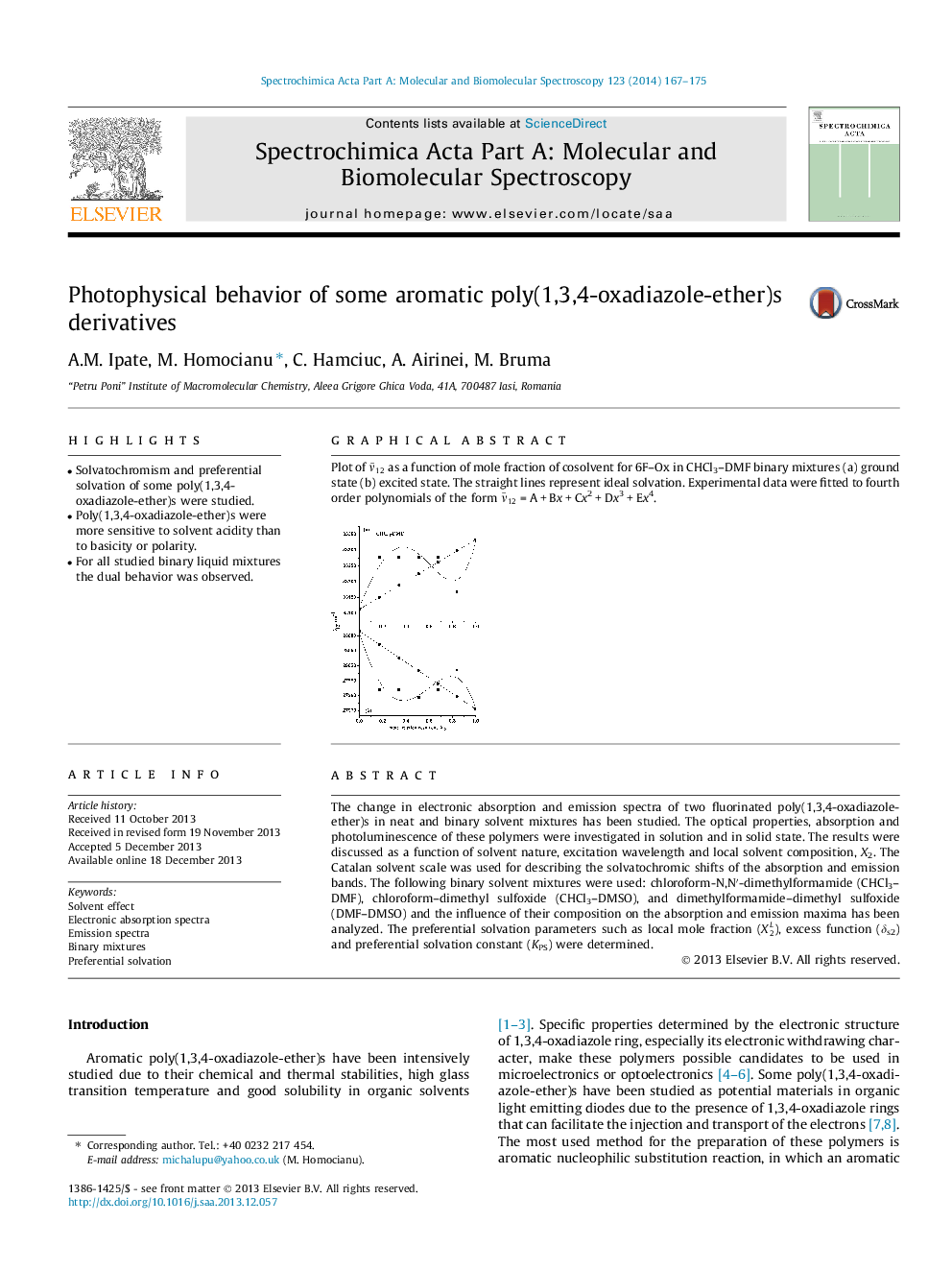| Article ID | Journal | Published Year | Pages | File Type |
|---|---|---|---|---|
| 1232832 | Spectrochimica Acta Part A: Molecular and Biomolecular Spectroscopy | 2014 | 9 Pages |
•Solvatochromism and preferential solvation of some poly(1,3,4-oxadiazole-ether)s were studied.•Poly(1,3,4-oxadiazole-ether)s were more sensitive to solvent acidity than to basicity or polarity.•For all studied binary liquid mixtures the dual behavior was observed.
The change in electronic absorption and emission spectra of two fluorinated poly(1,3,4-oxadiazole-ether)s in neat and binary solvent mixtures has been studied. The optical properties, absorption and photoluminescence of these polymers were investigated in solution and in solid state. The results were discussed as a function of solvent nature, excitation wavelength and local solvent composition, X2. The Catalan solvent scale was used for describing the solvatochromic shifts of the absorption and emission bands. The following binary solvent mixtures were used: chloroform-N,N′-dimethylformamide (CHCl3–DMF), chloroform–dimethyl sulfoxide (CHCl3–DMSO), and dimethylformamide–dimethyl sulfoxide (DMF–DMSO) and the influence of their composition on the absorption and emission maxima has been analyzed. The preferential solvation parameters such as local mole fraction (X2L), excess function (δs2) and preferential solvation constant (KPS) were determined.
Graphical abstractPlot of ν̃12 as a function of mole fraction of cosolvent for 6F–Ox in CHCl3–DMF binary mixtures (a) ground state (b) excited state. The straight lines represent ideal solvation. Experimental data were fitted to fourth order polynomials of the form ν̃12 = A + Bx + Cx2 + Dx3 + Ex4.Figure optionsDownload full-size imageDownload as PowerPoint slide
